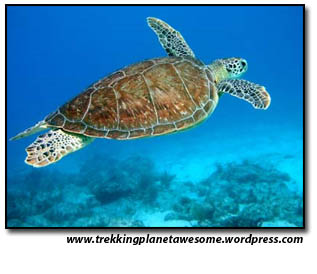Fisheries regulators reject gill-net ban but adopt other restrictions at emotional DMF meeting

State fisheries regulators rejected a proposed ban on large mesh gill nets used for flounder fishing but adopted other restrictions to reduce the incidental capture of sea turtles in fishing nets at a meeting Thursday, Feb. 18, that was attended by about 400 people, mostly commercial fishermen.
Now the state and fishermen are holding their collective breath, waiting to hear if the National Marine Fisheries Service (NMFS) will decide the measures offer adequate protection to sea turtles.
“I don’t believe they (NMFS) will accept this,” said Louis Daniel, director of the North Carolina Division of Marine Fisheries (DMF).
NMFS put the state on notice in July that it was not in compliance with the Endangered Species Act (ESA) after observing the incidental capture of turtles in flounder nets in Core Sound. All five species of turtles found in North Carolina – green, loggerhead, leatherback, Kemp’s ridley, and hawksbill – are listed as either endangered or threatened.
Without an ESA Section 10 Permit, any capture of turtles in fishing nets is illegal, even if the turtles are released alive and unharmed. The permit allows restricted fishing unless the number of captures authorized for any species is reached.
North Carolina has had a Section 10 Permit for a large swath of Pamlico Sound since 2000, but other waters, including Core Sound, are not covered.
The rules adopted by the state Marine Fisheries Commission (MFC) last week are interim measures effective until a statewide Section 10 Permit is approved by NMFS.
A separate but related issue is a lawsuit that was filed on Tuesday, Feb. 23, by the Karen Beasley Sea Turtle Rescue and Rehabilitation Center at Topsail Island, represented by the Duke Environmental Law and Policy Center. The lawsuit was filed in U.S. District Court for the Eastern District of North Carolina and claims that the state, including DMF and MFC, authorizes gill net fishing in violation of the ESA. The center asks that the court ban all gill net fishing in state waters.
“If we elect to not address NMFS’ concerns and a lawsuit is filed, a judge could order an injunction stopping all commercial fishing that could last indefinitely,” MFC chairman Rob Bizzell warned Thursday.
Commissioner Bradley Styron, a commercial fisherman and seafood dealer from Cedar Island, said he recognized the risk, but believed there were ways to eliminate turtle interactions without putting fishermen out of work.
Styron proposed the compromise measures that were approved in a 5 to 2 vote. Those measures allow fishermen to use large mesh gill nets from 5 p.m. Monday until 10 a.m. Friday, authorizing 2,000 yards to be fished in 100 yard shots with at least 25 yards between nets.
The commission’s vote came after five hours of public comment. Close to 400 people, mostly commercial fishermen, crowded the auditorium at the Riverfront Convention Center in New Bern.
Many fishermen spoke about the economic hardship that would result from banning large mesh set gill nets from May 15 until December 15.
“You are taking away our jobs. This is our only income,” said Susan Barber, a commercial fisherman from Rodanthe.
James Caldwell said his business, Swartz Fishing Supplies on Hatteras Island, had already felt an impact.
“As soon as the proposed rules were made public, people stopped buying net,” he said.
Other fishermen pointed out that little is known about the current health of sea turtle populations.
Asa Gray from Rodanthe said he has seen many more turtles, especially green turtles, in the past few years.
“Our position is to support the status quo until the federal government provides a turtle stock assessment,” said Britton Shackelford, president of North Carolina Watermen United, an advocacy group.
The last survey of the South Atlantic turtle population by NMFS was conducted 25 years ago and relied on data from Florida nesting sites, according to fisheries commissioner Edward Lee Mann from Manteo.
Although the vast majority of people speaking at the meeting asked the commissioners to try to minimize hardships for commercial fishermen and fish houses, several recreational fishermen felt that the proposed ban wasn’t restrictive enough.
Stephen Ammons, executive director of the North Carolina Coastal Conservation Association, a recreational fishing group, said the proposed ban was too limited in scope. He said commercial flounder fishermen would move into other fisheries, placing more stress on species like speckled trout.
And, a statement read into the record on behalf of Seth Vernon, an inshore guide who helped produce “Redfish Can’t Jump,” a film advocating net bans and red drum gamefish status, urged the elimination of all gill nets from state waters.
Sean McKeon, president of the commercial fishing trade group, the North Carolina Fisheries Association, said protection of sea turtles was not the true concern of the recreational fishing groups involved in the discussion.
“This has absolutely nothing to do with turtles. This is about banning nets,” McKeon said.
A proclamation issuing the new rules could be released this week. DMF director Louis Daniel said he expects a timely review and response by NMFS.
If NMFS doesn’t approve the compromise, the MFC would have time to revise the rules before turtles begin showing up in North Carolina waters in May. The next MFC meeting is scheduled for March 23-25 in Kitty Hawk.

















